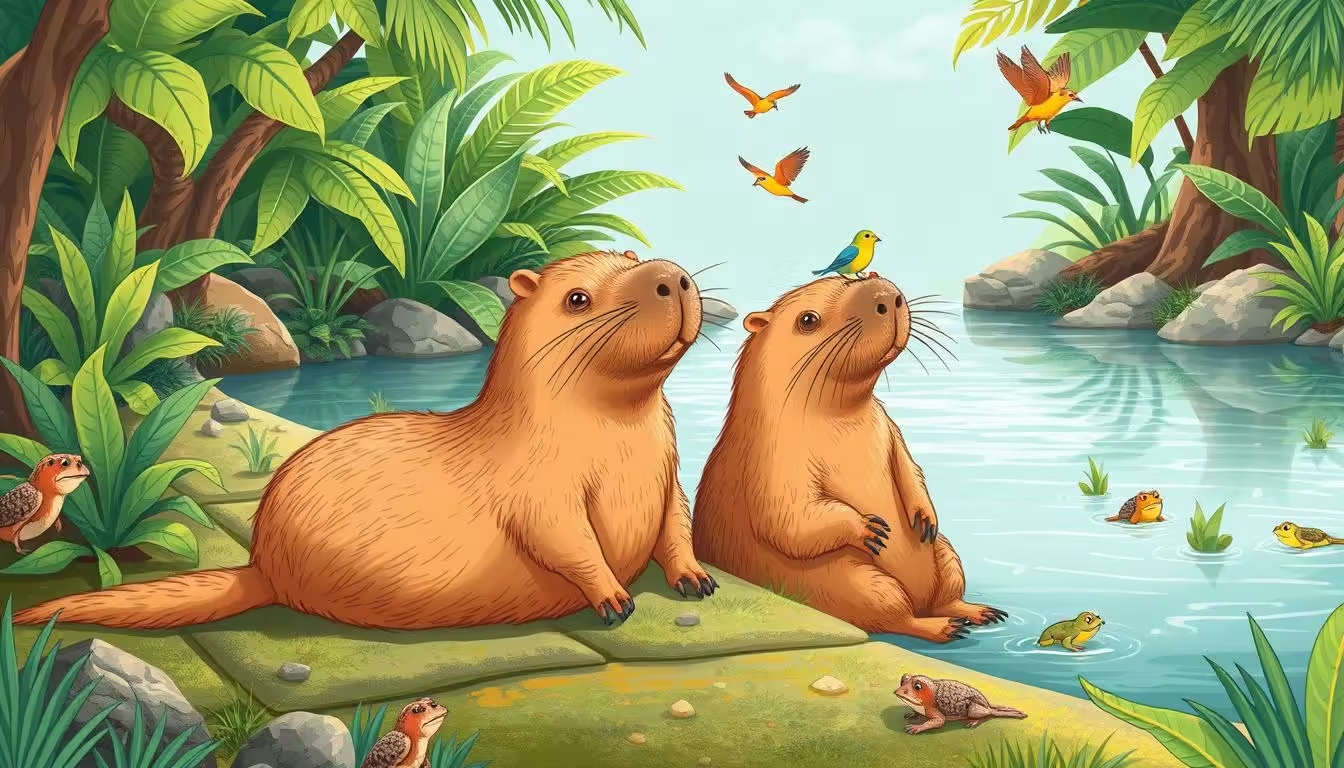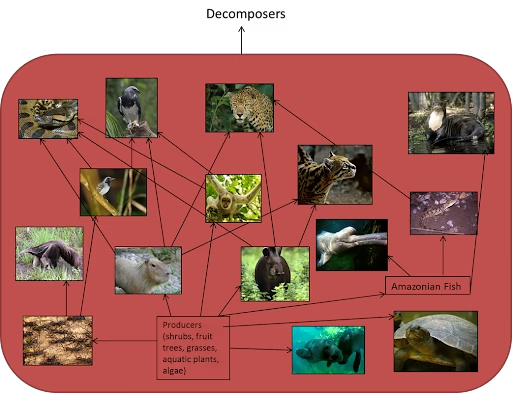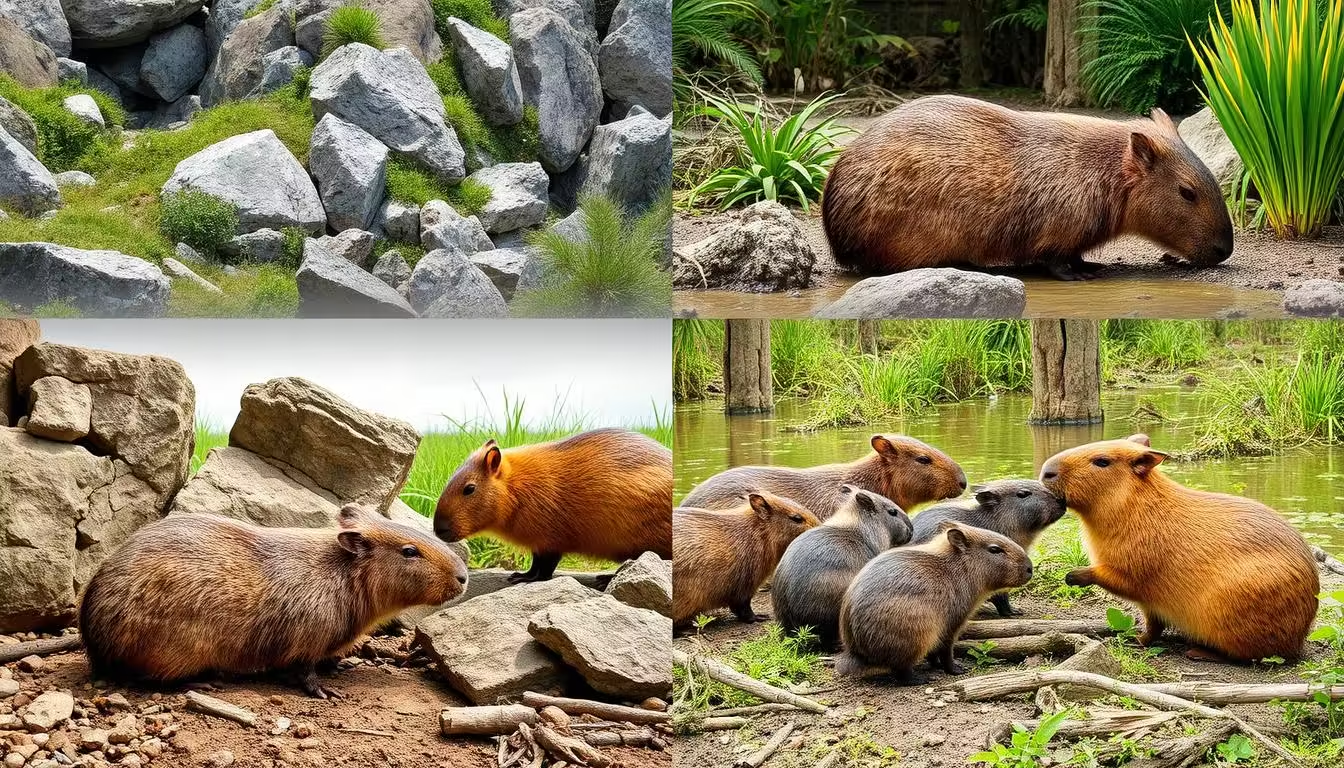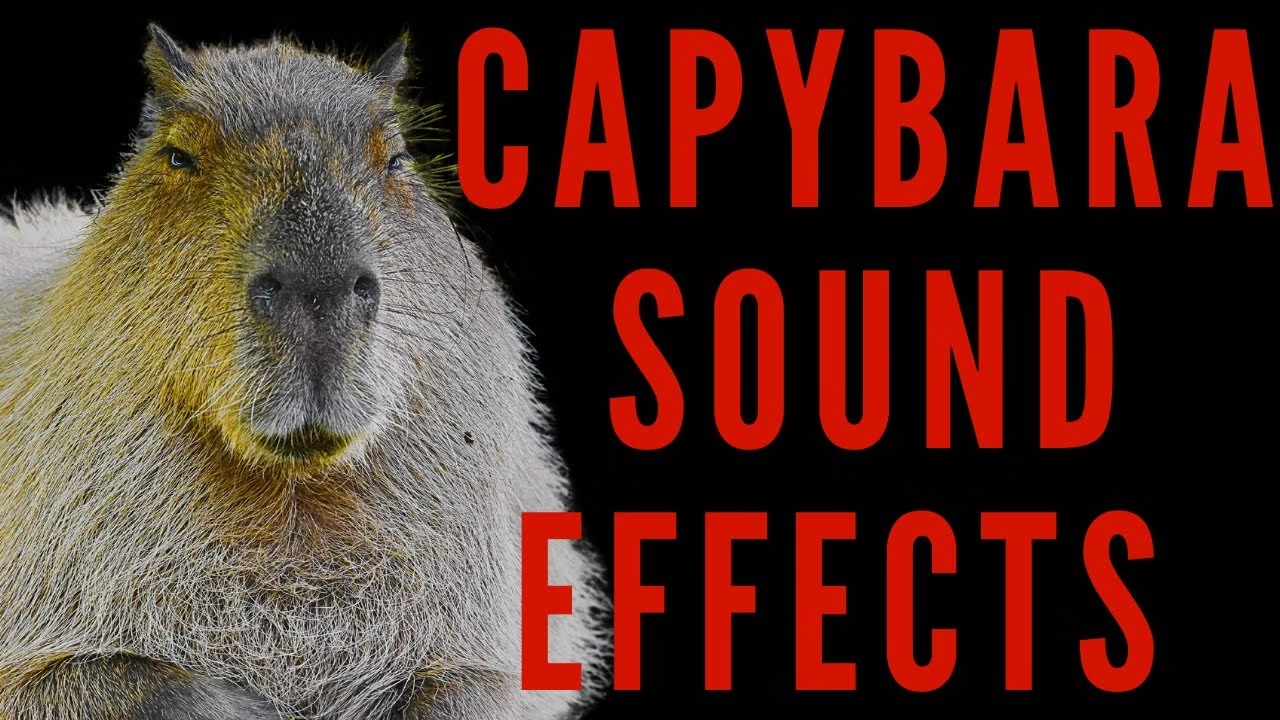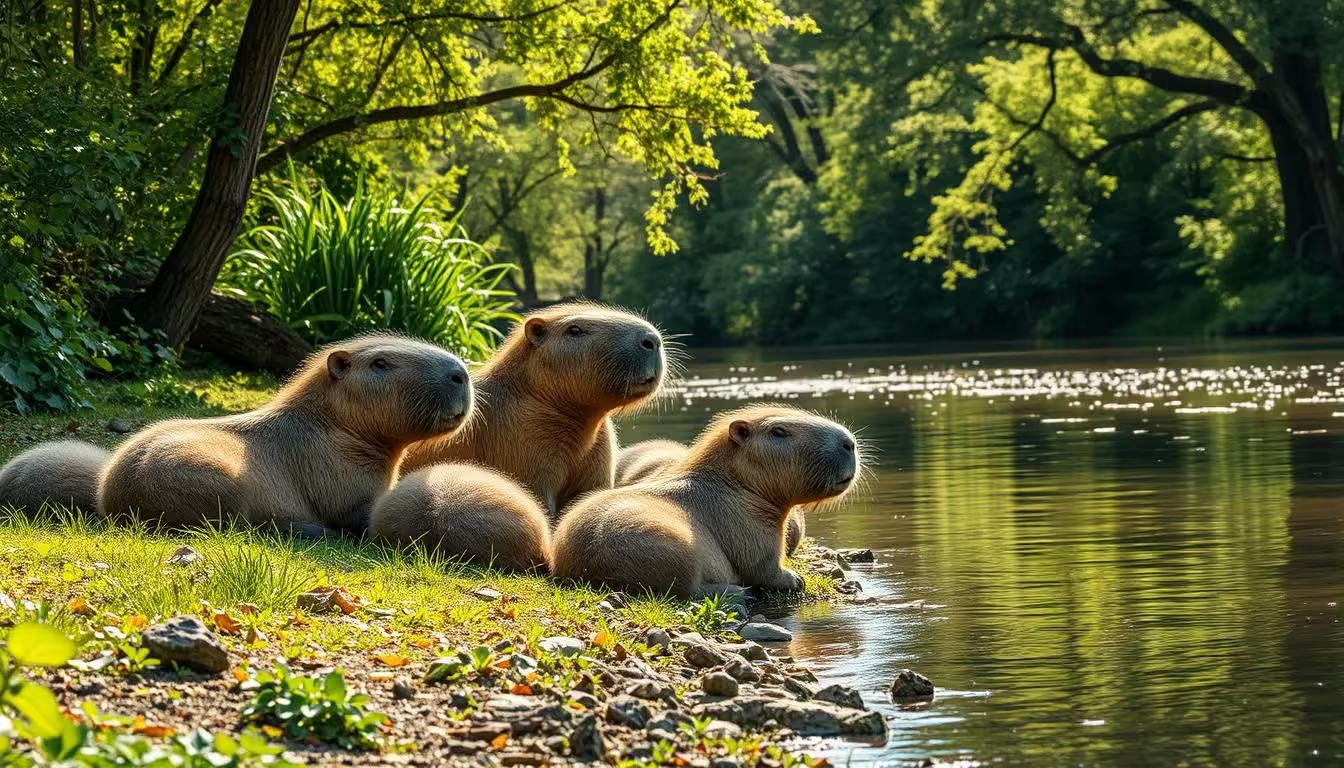Capybara, the semi-aquatic creatures from South America are often mistaken for pigs or beavers. Their size and unique look lead to many misconceptions about them. We’ll look at the truth behind these myths. We’ll explore their social behavior, diet, and role in ecosystems. We’ll also examine their portrayal in popular culture. Our goal is to […]
Tag Archives: Capybaras
Did you know capybaras weigh between 35 to 70 kilograms, averaging about 50 kilograms? These large rodents from South America have won the hearts of many. They can be found in zoos and animal sanctuaries, offering a chance to see them up close and learn about them. In the United States, zoos like the San […]
Capybaras live in flooded grasslands and lowland forests. Their grazing and social behavior change these areas a lot. This shows how important they are to their habitats. As herbivores, capybaras have big home ranges, up to 200 hectares. On average, a group uses 5 to 20 hectares. Their density is amazing, with one study showing […]
Rock cavies and capybaras belong to the Caviidae family and are found in South America. Capybaras are the biggest rodents alive, while rock cavies are smaller. They live in different places, like savannas and forests, and are often near water. These rodents are key to their habitats. They have special traits that make them stand […]
Capybaras have unique ways to communicate. They use sounds, body language, and gestures to talk to each other. Knowing how they communicate helps us understand their social lives, how to protect them, and their behavior. Capybaras make many different sounds, like high-pitched whistles and low-pitched grunts. Each sound means something different. They use these sounds […]
Capybaras size of these groups changes based on where they live and how many there are. Their social bonds are key to their survival. They touch, groom, scent mark, and vocalize to stay connected. This connection might help them live longer. Key Takeaways Capybaras are highly social animals that live in groups ranging from 6 […]

